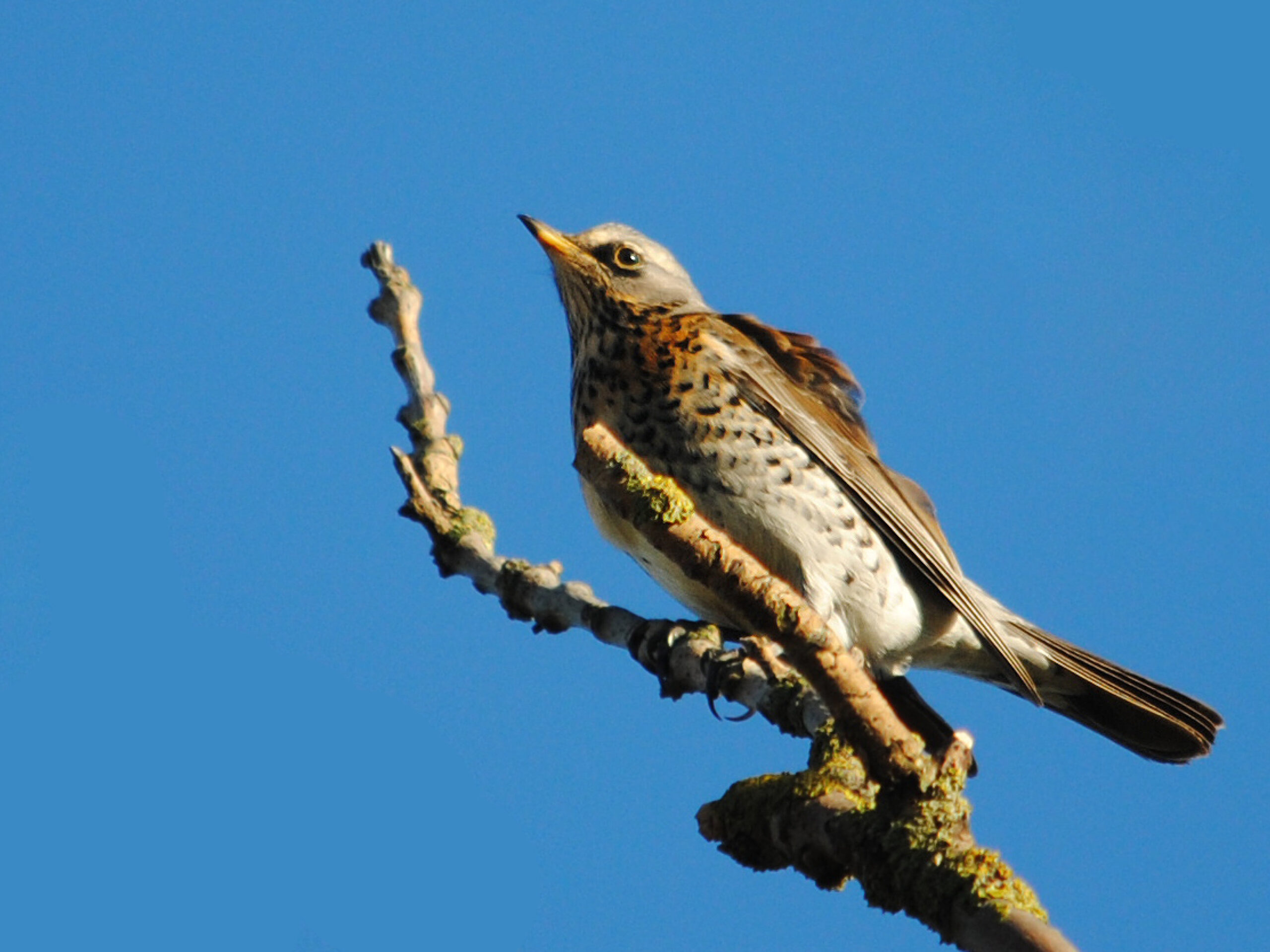Winter is here
Winter is here, and food and warmth are hard to find in the countryside. But that doesn’t mean the wildlife has disappeared – you just need to know what to look for.
Paxton Pits and Brampton Woods are great places to spot the birds which thrive in the chill of an English winter.
Long-tailed tits spend the winter in extended family groups huddling together at night for warmth. The older and more dominant birds take up the warmer, central positions.
During the day, flock members constantly call “sisi-si” to stay in touch. If you find a silent flock in the afternoon, its members will usually be following one another beak to tail to their secret roosting bush.
Thrushes are in their element in winter woodlands and grasslands. Alongside the year round blackbirds and song thrushes, a new group arrives around this time from the even colder Arctic north. Around 1.4 million redwings and fieldfares visit Britain each year from Scandinavia and farther east.
Redwings are most similar to song thrushes but look even warmer with bright orangey-red flanks and a strong white eyebrow, giving them a bold, aggressive look. Their thin “seep” flight calls are distinctive. Fieldfares have black tails, and grey and brown patterned upperparts and more streaks than spots underneath. They are strong, bold-looking birds, that chunter “chak-chak” as they fly away.

Closer to lakes and wetlands one of the most spectacular winter wildlife sights is provided by starlings. A “murmuration” is a swirling flock of noisy winter birds. Starlings exemplify this in their pre-roost gatherings. Huge numbers churn in dusk before dropping with one swift, balletic flourish. Despite appearances, as with shoals of fish, there is no flock-wide coordination. Each bird responds only to its nearest seven neighbours by aligning speed and direction, moving closer to those farthest from them and away from those nearest. This confuses predators and delights observers. Once the birds plummet into roost, they will squabble for the best perch, with older more dominant birds claiming the warmer, safer centre.
If you’re looking for some wildlife inspiration for the Christmas holidays then make sure to sign up for 12 Days Wild. This festive nature challenge encourages you to do one wild thing a day from the 25th December to the 5th January each year. In those quiet days between Christmas and New Year there is plenty to see and do in the outdoors – or in the warmth of your home. They could be little things to help nature - like recycling your Christmas tree or feeding the birds – or connecting to the natural world. Sign up at www.wildlifetrusts.org/12dayswild and we’ll send you inspiration and ideas.
And remember if you’re looking for a Christmas gift for a wildlife lover then there’s plenty to choose from in our online shop. Adopt a Highland cow or hedgehog, see wonderful images every day with our 2025 calendar, wear wildlife with pride with our range of clothing and much more. Visit shop.wildlifebcn.org



